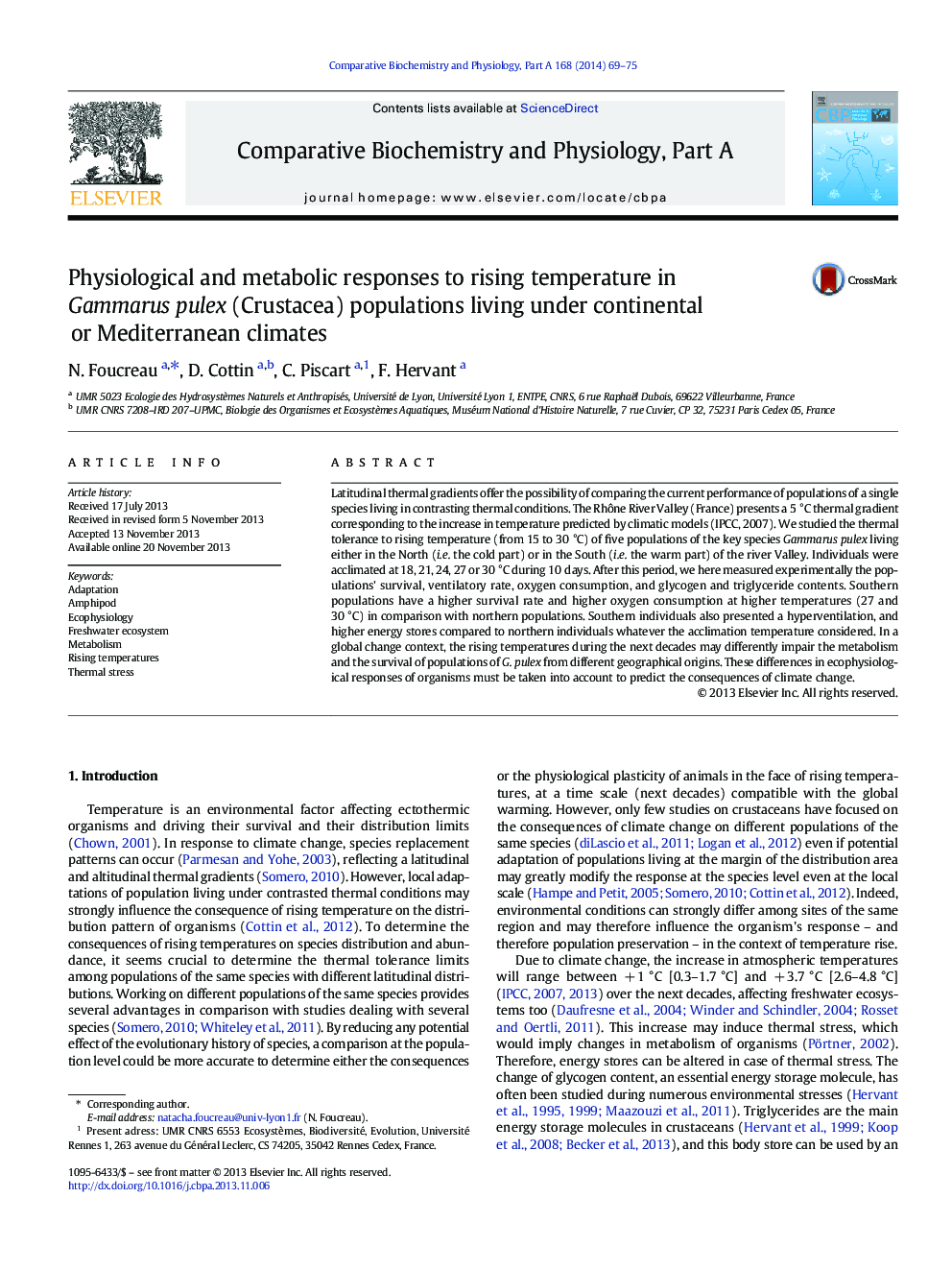| Article ID | Journal | Published Year | Pages | File Type |
|---|---|---|---|---|
| 1972263 | Comparative Biochemistry and Physiology Part A: Molecular & Integrative Physiology | 2014 | 7 Pages |
Latitudinal thermal gradients offer the possibility of comparing the current performance of populations of a single species living in contrasting thermal conditions. The Rhône River Valley (France) presents a 5 °C thermal gradient corresponding to the increase in temperature predicted by climatic models (IPCC, 2007). We studied the thermal tolerance to rising temperature (from 15 to 30 °C) of five populations of the key species Gammarus pulex living either in the North (i.e. the cold part) or in the South (i.e. the warm part) of the river Valley. Individuals were acclimated at 18, 21, 24, 27 or 30 °C during 10 days. After this period, we here measured experimentally the populations' survival, ventilatory rate, oxygen consumption, and glycogen and triglyceride contents. Southern populations have a higher survival rate and higher oxygen consumption at higher temperatures (27 and 30 °C) in comparison with northern populations. Southern individuals also presented a hyperventilation, and higher energy stores compared to northern individuals whatever the acclimation temperature considered. In a global change context, the rising temperatures during the next decades may differently impair the metabolism and the survival of populations of G. pulex from different geographical origins. These differences in ecophysiological responses of organisms must be taken into account to predict the consequences of climate change.
